This recipe is typical of the Italian Dolomite and Trentino-Alto Adige regions. It is a delightful yet simple cake. Since it is not overly sweet, it is ideal even for those who do not love desserts.
The cake is also called “Schwarzplententorte,” a name that reminds us of the regions’ proximity to Austria and Switzerland. In fact, another name for buckwheat is “Buckweizen,” which means beech grain, or “Heidekorn” (Accademia del pizzocchero di Teglio, n.d.).
Buckwheat Flour Characteristics
What makes this cake special is the balanced combination of buckwheat, preserves, and walnuts. Blueberry preserve is perhaps the most common, but you can also use raspberries, blackberries, or cranberries as you like. You can also substitute hazelnuts or almonds for the walnuts. Buckwheat flour is especially nutritious as a source of protein, because it contains the eight essential amino acids in optimal proportions. Buckwheat flour is also gluten-free, and is therefore suitable for those suffering from celiac disease or gluten intolerance.
History of Buckwheat
For almost five centuries, buckwheat has been an important source of livelihood for the mountain populations of the Alps and, to a lesser extent, the Apennines (Associazione Italiana Food Blogger, 2016). Its Italian name, “grano saraceno,” derives from the fact that during the time of the Serenissima Republic of Venice, the major merchants and users of this particular flour were the Turks, commonly referred to as “Saracens.” However, buckwheat’s journey to Italy began even farther away – Siberia, China, and Manchuria are the most likely places of origin. From there, it spread through the Mongolian and Turkish populations, first reaching the Black Sea and then Europe and Italy, thanks to the commercial activity of the Venetians. Buckwheat is used in a variety of traditional northern dishes, such as polenta taragna and pizzoccheri. Buckwheat was grown in the colder areas of the north of Italy due to characteristics that make it ideal for cold environments, unlike durum wheat (wiki.cucchiaio.it, n.d.).
Recipe
Prep Time: 20 minutes
Ingredients:
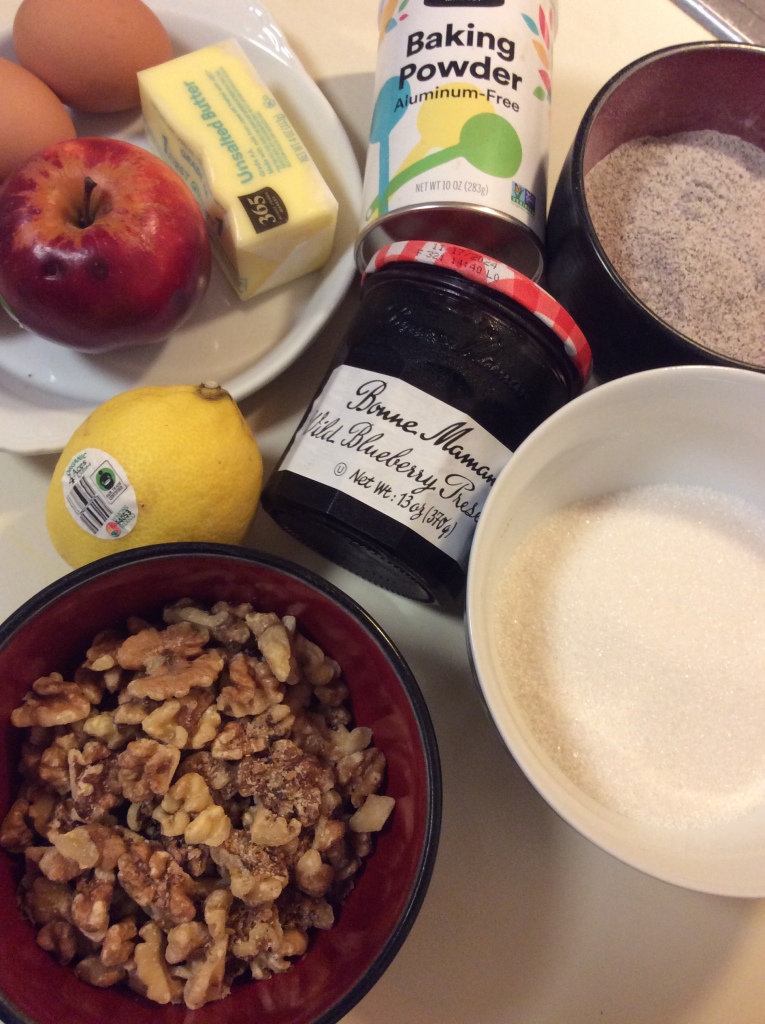
- 4 Large eggs at room temperature
- 1 cup buckwheat flour (about 5.5 oz)
- 1 stick butter (about 4 oz) at room temperature
- 1 cup sugar (brown or white)
- 1 cup finely ground walnuts (you can blend walnuts as I did)
- 1 jar of blueberries preserves (about 13 oz)
- 1 tablespoon baking powder
- 1 medium apple
- 1 pinch of salt
- Grated zest of 1 lemon (or pure vanilla extract)
- 4 oz fresh blueberries
- powdered sugar to taste
Method:
1. Peel the apple, remove the seeds, chop it into large chunks, put it into a blender, mix until you obtain a smooth puree, then set aside.
2. Separate the yolks from the whites, set the yolks aside, then add one-third of a cup of sugar to the egg whites and whip them until stiff.
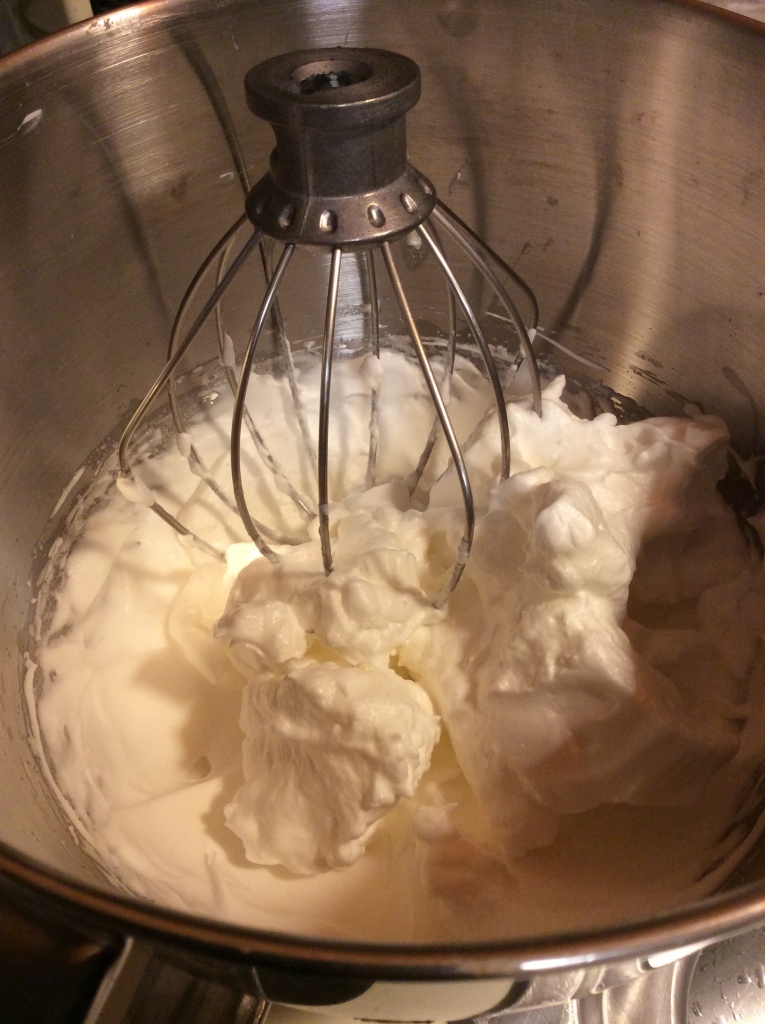
3. In another bowl, start whipping the butter with the remaining sugar, add the grated lemon peel, then add the egg yolks you set aside earlier, one at a time. Whisk until the mixture is smooth.
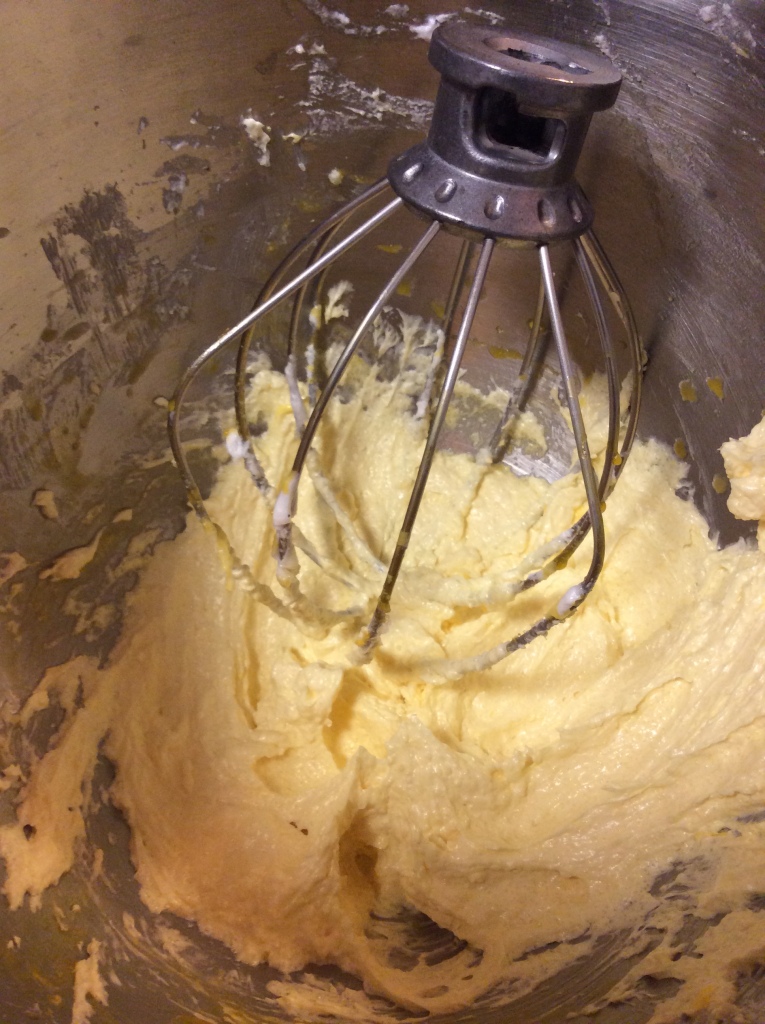
4. Mix the baking powder with the buckwheat flour and gradually add to the butter, sugar, and egg yolk mixture, continuing to mix using a blender or a spatula.
6. Add the finely ground walnuts and the apple puree.
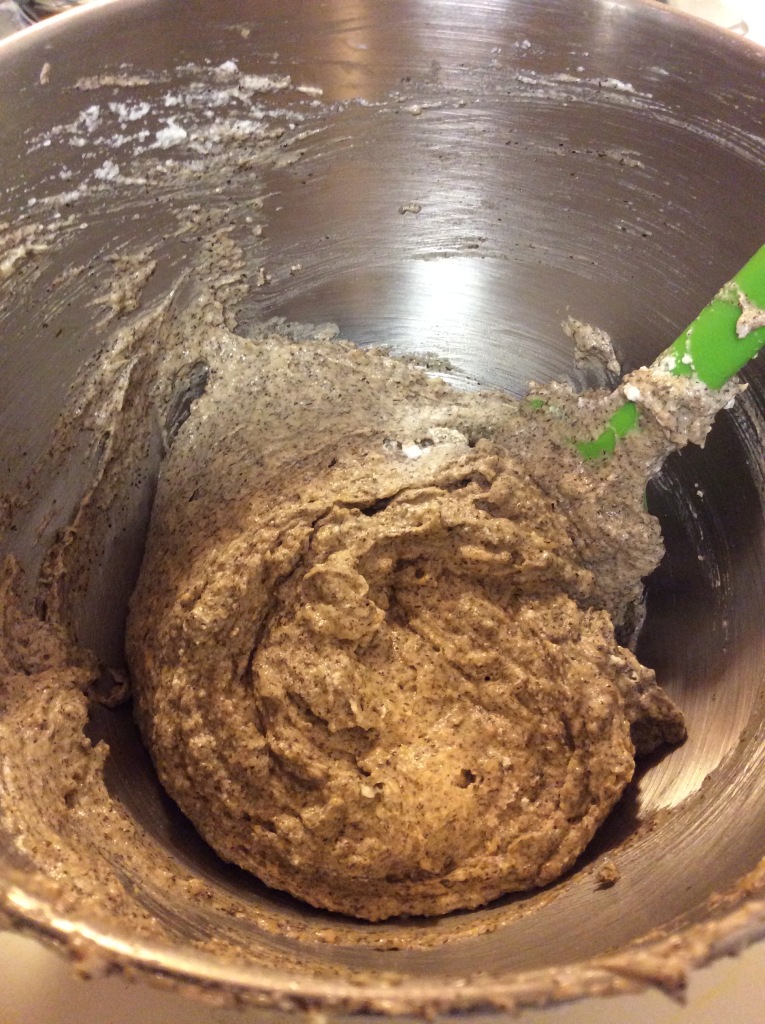
7. Finally, add the salt and the whisked egg whites to the dough and carefully mix them using a spatula.
8. Preheat the oven to 350°F.
9. Line a cake pan with parchment paper and pour in the dough.
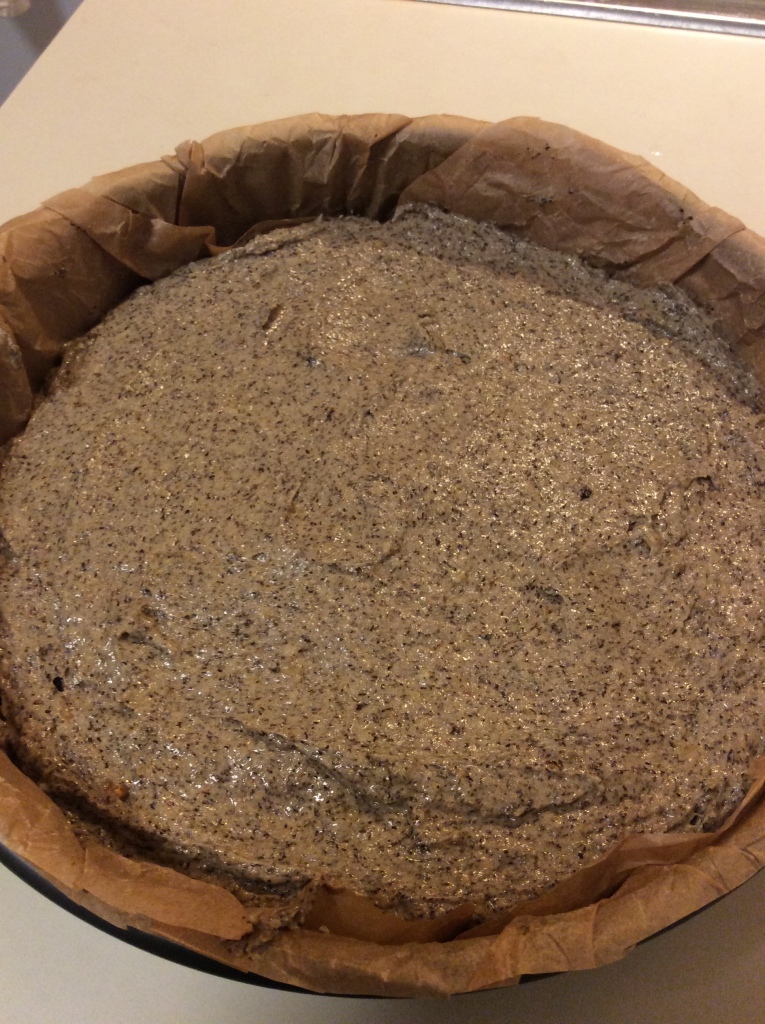
10. Reduce the oven temperature and bake at 340°F for about 40 minutes. Test the cooking time using a toothpick – it should come out dry.
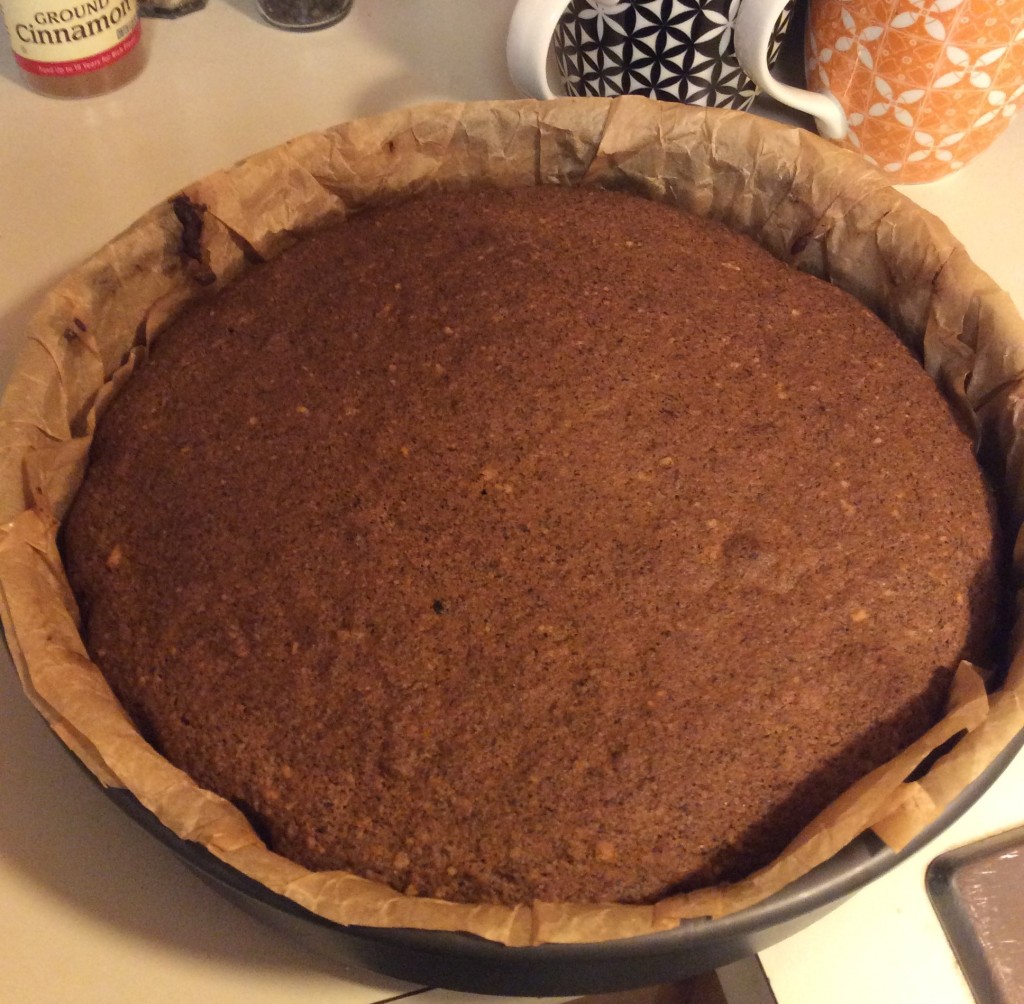
11. Allow the cake to cool, then remove it from the mold. Once completely cooled, cut it in half to obtain two discs.
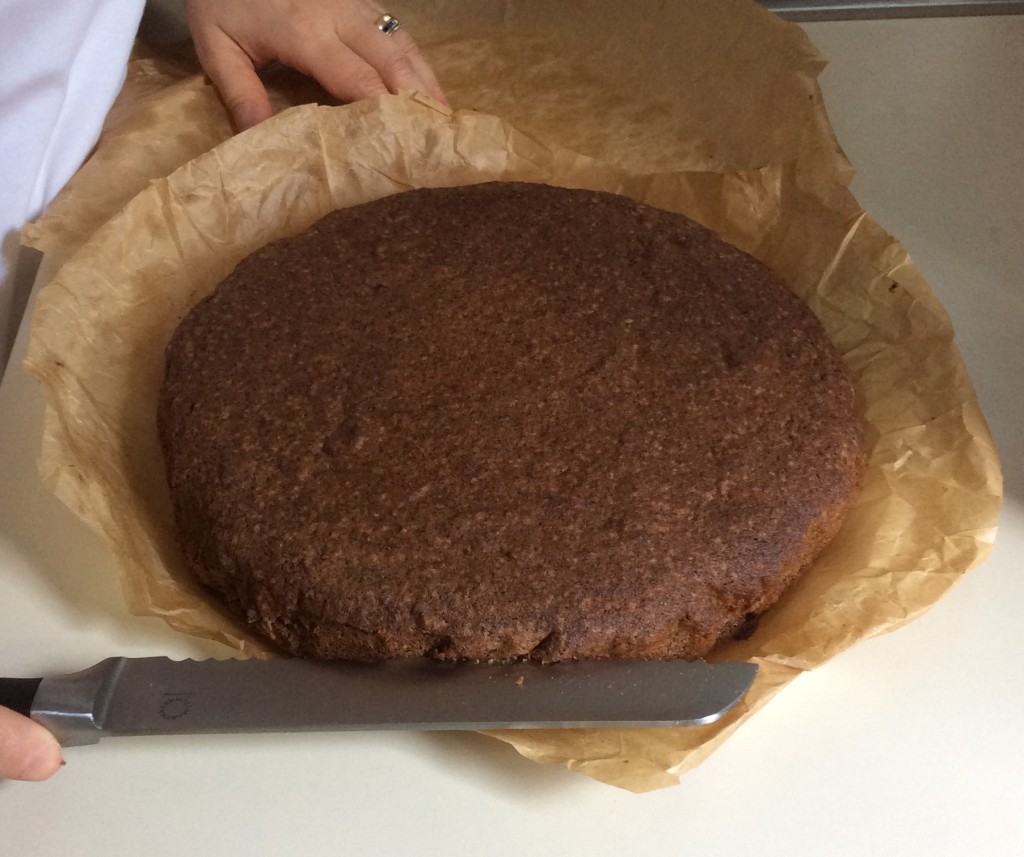
12. Spread the blueberry preserve on the base disc (set aside a few spoons of preserve for the top layer), cover with the second disc, and spread the surface of the buckwheat cake with the remaining preserve.

13. Place the previously washed and dried blueberries on the top surface, sprinkle with powdered sugar, and enjoy! Serve with whipped cream or vanilla ice cream (or another flavor that goes well with berries).
You can top the cake with other berries – or no berries at all – rather than blueberries, or just a sprinkle of powdered sugar.
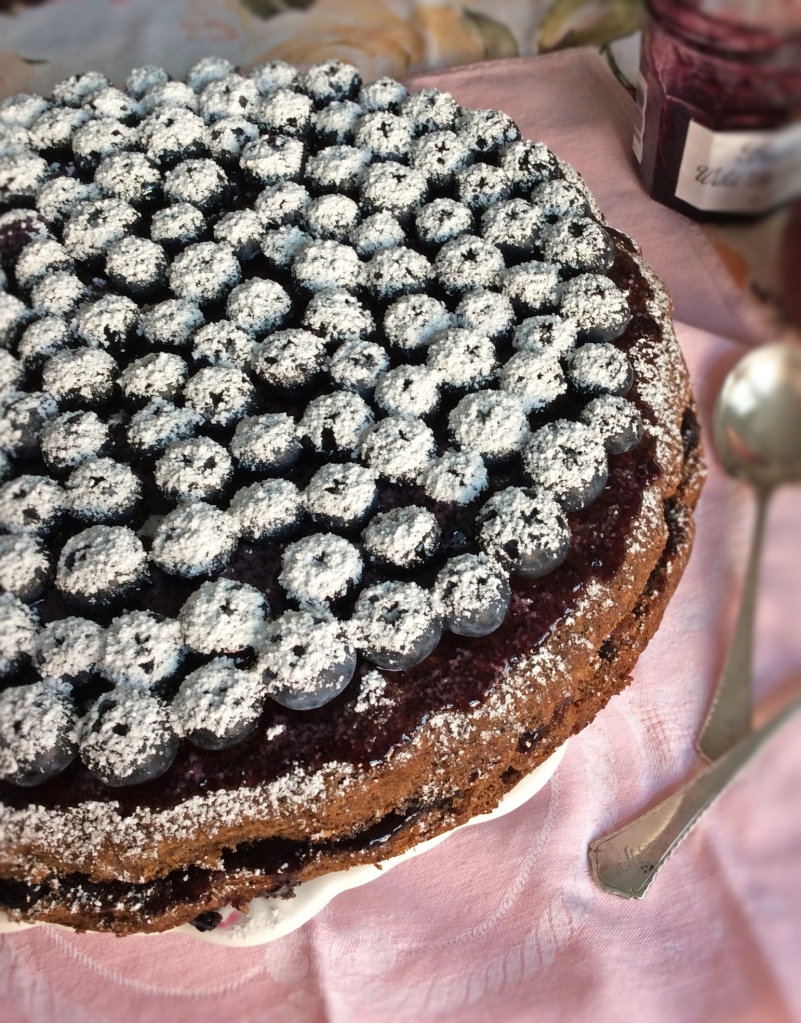

References
Accademia del pizzocchero di Teglio. (n.d.). Il nome grano saraceno. Accademia Del Pizzocchero Di Teglio. Retrieved August 22, 2023, from https://accademiadelpizzocchero.it/il-nome-grano-saraceno/
Associazione Italiana Food Blogger. (2016, August 24). Le Torte di Grano Saraceno. AIFB. https://www.aifb.it/cultura-enogastronomica-italiana/piatti-tradizione-italiana/giornata-nazionale-delle-torte-grano-saraceno/
wiki.cucchiaio.it. (n.d.). Grano saraceno. Wikifood by Il Cucchiaio D’Argento. Retrieved August 21, 2023, from https://wiki.cucchiaio.it/wiki/grano-saraceno/

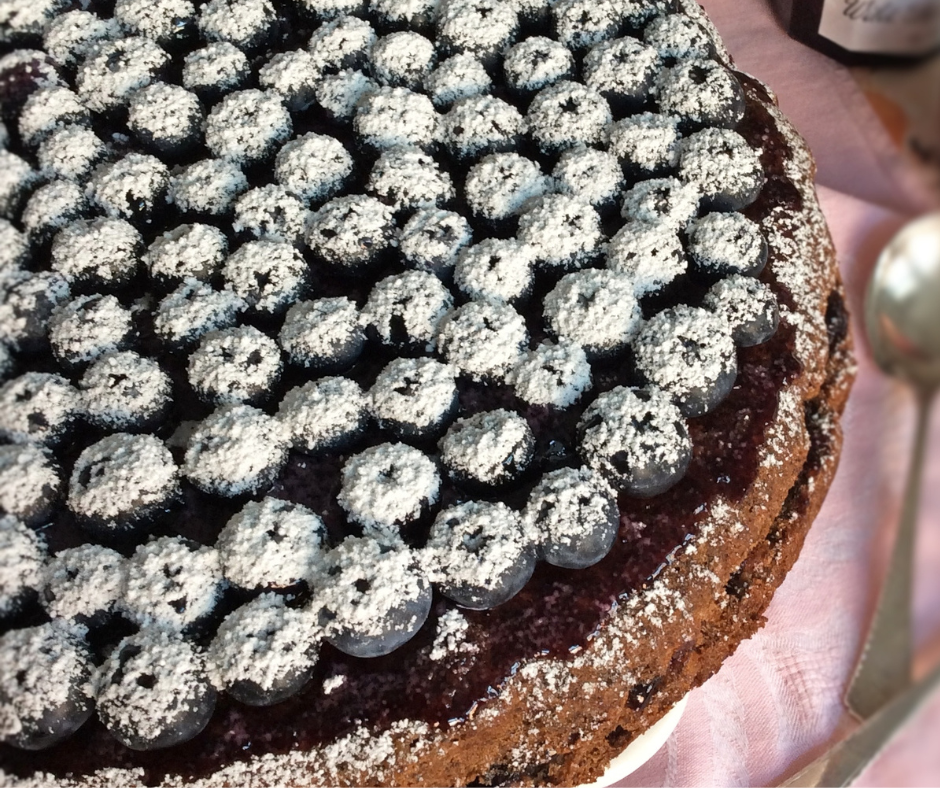

Leave a comment